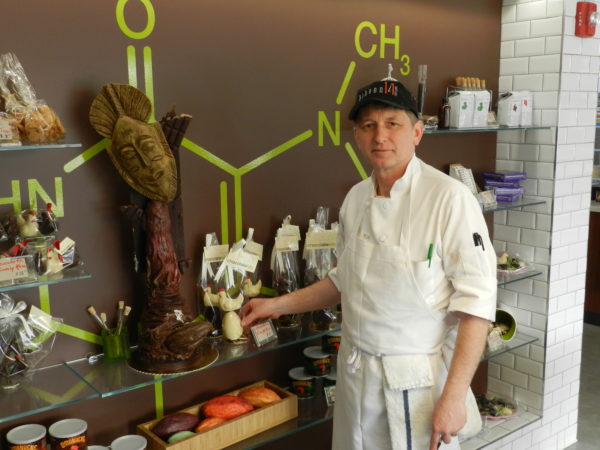
American consumers are projected to spend a whopping $2.5 billion on candy and chocolates this Easter season.
But with cocoa prices increasingly volatile, local chocolate shops and confectioners are looking ahead to the fall, when industry analysts say the effects of an anticipated 45,000-metric-ton shortfall for the global production cycle ending in September could reach markets.
Since February 2011, when the wholesale cocoa price hit a 32-year high of about $3,475 per metric ton, the average market price of cocoa has fallen by more than a third to about $2,200 per metric ton this past February, according to the International Cocoa Organization (ICCO).
However, the ICCO has warned that global cocoa bean demand for the 2013 cycle, which runs through September, is likely to outpace supply by about 45,000 metric tons. Analysts and candy industry executives say the increase could lead to a significant spike in the price of cocoa, which would then be passed down to confectioners and retailers like the Chocolate Rain Shop in Norwalk.
“The cost of cocoa does impact the entire industry, including a small operation” like Chocolate Rain Shop, said co-owner Diana Gould.
With cocoa as the primary ingredient in nearly all of Chocolate Rain Shop”™s products, Gould said the shop”™s costs are regularly impacted by cocoa prices, adding that it is difficult for a small operation to protect against price fluctuations.
“A small operation has a difficult time stocking a large amount in order to hedge against the increase in cocoa prices,” Gould said. “We would require a special storage facility with climate control.”
Others said that while their shops will likely be impacted by any cocoa price increases, the damage wouldn”™t be as severe because they already pay a premium for the chocolate they import.
“If the cost rises, it will affect us,” said Didier Berlioz, pastry chef at the Chocolate Lab in Greenwich. But, he said, “We”™re buying chocolate at $10 a pound. … If you”™re paying $1.25 a pound for your chocolate, you”™re going to see a lot of fluctuation depending on the market. But at $10 a pound, we”™re going to eat up that price increase.”
The Chocolate Lab is at the J House Greenwich, a boutique hotel that opened last summer. There, Berlioz and Executive Chef Francois Kwaku-Dongo seek to import chocolate from parts of the world that are known for growing cocoa beans but that have a much smaller share of the chocolate production industry.
“What we look for is a company that makes the chocolate in the country of the beans”™ origin,” Berlioz said. “We are willing to pay a premium price so we can tell their story.”
At Bridgewater Chocolate, a confectioner with locations in Brookfield and West Hartford, co-owner Erik Landegren said major manufacturers like Hershey”™s and Lindt are “probably doing cartwheels” with current prices at recent lows.
But Bridgewater Chocolate, which he said uses higher-end cocoa beans, is less impacted by fluctuations.
“The cocoa price that we see every day is the commodity price and it”™s not the same as the cocoa or chocolate that we use,” Landegren said, adding that the generic cocoa bean is about a tenth of the price of what Bridgewater Chocolate uses. “It”™s true that they follow each other a little, but sometimes they don”™t even go hand in hand.”



















